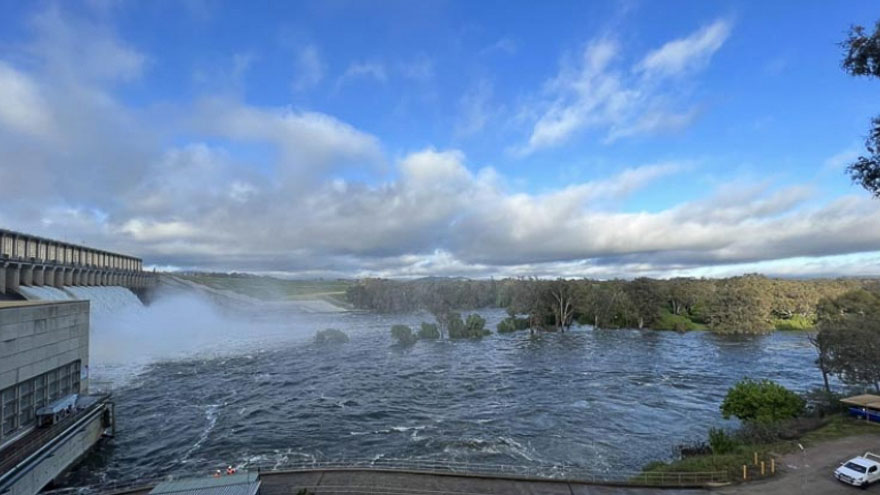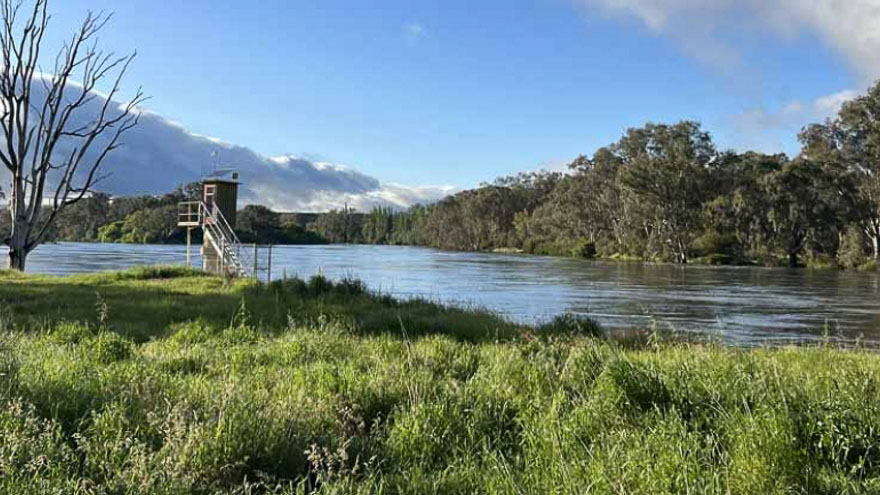The regular update includes:
- catchment conditions
- forecast rainfall and inflows
- water releases
- planned management for the coming week.
Catchment conditions
For the week of 26 October to 1 November the rainfall across the Murray–Darling Basin was largely above average with large parts of the upper Murray receiving more than 100 mm over the period. At Hunter Hill it was recorded 169.2 mm, 108.8 mm at Tallandoon at the Mitta Mitta River gauge, and the Hume reservoir gauge recorded 103 mm of rain.
Soil moisture levels for the upper Murray have increased since last week due to recent rainfall, the levels are currently sitting at 77%, which is now in the top 1% of historical values for this time of year.
Forecast rainfall and inflows
The Bureau of Meteorology is expecting rainfall totals to 7 November 2022 to be in the range of 25–50mm across much of the southern Murray–Darling Basin.
The 7-day forecast map is automatically generated and subject to change daily when the models are run.
The outlook for the next 3 months shows a similar picture with a high chance of above-median rainfall.
The Bureau of Meteorology is the best source of information to stay up-to-date with more detailed forecast rainfall and flood information.
The status of the Bureau of Meteorology’s El Niño–Southern Oscillation Outlook is currently La Niña. The Bureau suggests this La Niña event may return to neutral conditions early in 2023. La Niña events increase the chances of above-average rainfall during spring and summer for northern and eastern Australia.
In addition, the negative Indian Ocean Dipole (IOD) event is likely to continue into late spring. A negative IOD event is typically associated with above average spring rainfall for much of Australia.
Dartmouth Dam and Hume Dam this week
The MDBA’s priority is keeping the Hume and Dartmouth Dams safe, capturing and storing water, and where we can, mitigating floods.
Flood operations are being conducted at both dams.
We have seen significant water flow into Hume Dam from upstream rivers and creeks since Monday 31 October 2022 following heavy rain. These high inflows of over 100,000 megalitres a day are still continuing and expected to peak around 130,000 megalitres a day on 2 November 2022.
The MDBA mitigated the full impacts of these increased flows on downstream communities and we are now passing them through at a lower rate of 75,000 megalitres a day.
Releases will stay around the level they are for several days as we pass these flood waters through. It is possible that releases from Hume Dam will be further increased, however this will depend on flows observed upstream of the dam and rainfall.
Rain is expected to clear through the catchments from today with relatively dry weather forecast.
Streamflows and rainfall forecasts will continue to be closely monitored and changes will be made in response to changing conditions.
The Bureau provides information on river heights in specific locations, please refer to them for further details as releases from Hume Dam may not reflect what is happening in your immediate area.
Flows are continuing over the spillway at Dartmouth Dam. The flow in the Mitta Mitta will be dependent on the volume flowing over the spillway plus inflows from tributaries downstream of the dam. The Mitta Mitta at Tallandoon has exceeded moderate flood level.
The situation is constantly evolving, and rivers can rise very quickly.
The MDBA does not provide flow forecasts during periods of flooding. For this information please refer to the Bureau of Meteorology.
Are you flood ready?
If you live, work or holiday on a floodplain, be prepared

Develop your personalised flood emergency plan for your home and property
www.ses.nsw.gov.au
www.ses.vic.gov.au/plan-and-stay-safe

All residents can sign up for the Early Warning Network to be notified about Hume Dam release activities during periods of flooding or high releases
www.waternsw.com.au/supply/ewn

Check the BoM website to receive the latest weather and flood information and warnings in your area
www.bom.gov.au/australia/flood
www.bom.gov.au/australia/warnings


